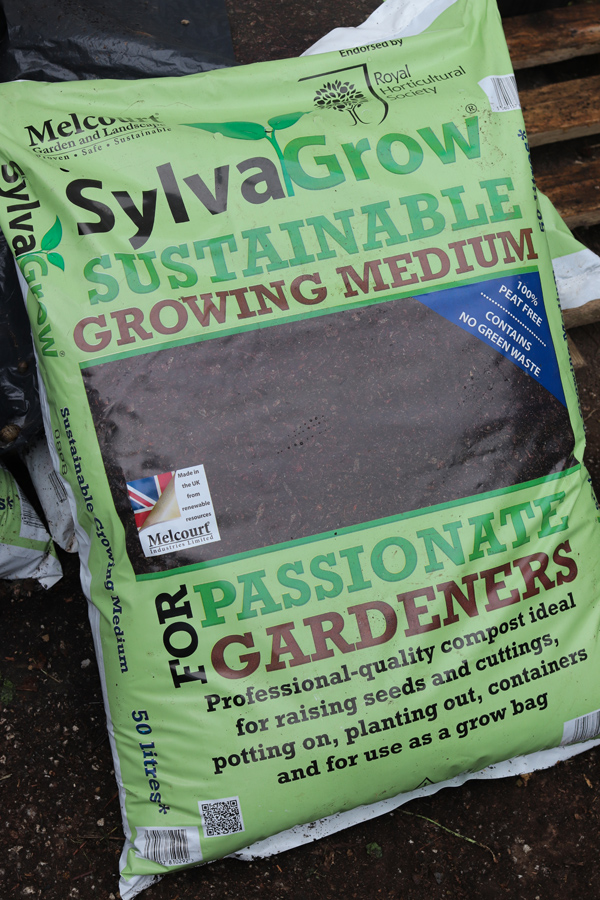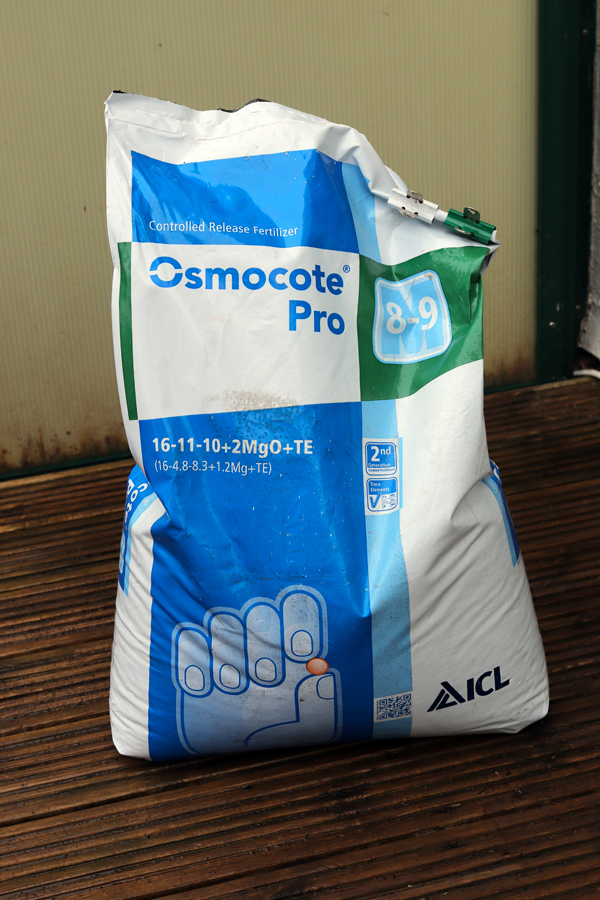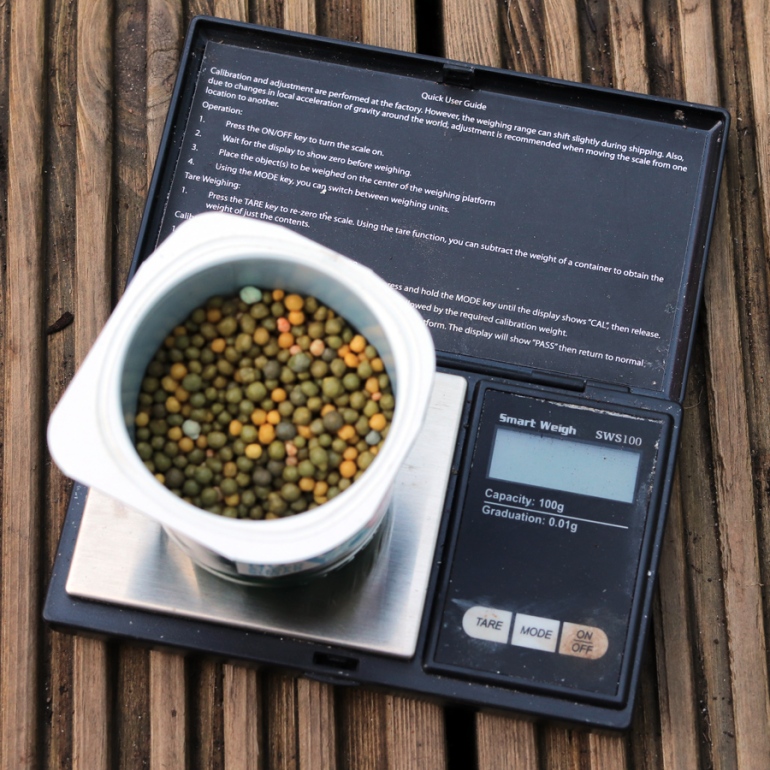At this time of year I’m putting a lot of plants into pots. This will include sowing seeds, pricking off seedlings, potting up young plants from the propagator, potting on plants into bigger pots and potting up plants that have been dug from the ground.
As an ex nurseryman, I know that professional growers do not generally use the type of composts available in garden centres. When I left the industry around four years ago, most nursery stock was still being grown in moss peat, coming from Ireland, Finland or the Baltic states. To this would be added a controlled release fertilizer and ground magnesian limestone. Fine peats and green waste don’t have the right physical properties in terms of water retention and air filled porosity at field capacity.
The nursery where I worked had been using peat alternatives for its own production for over 20 years. The main supplier in this area is Melcourt, whose composted wood waste product has been developed over many years and is capable of producing results comparable to peat. We bought directly from them and from a compost producer who used their raw materials in their product.
For the last few years they have been retailing their basic compost, Sylvagrow, as a retail product but it is exactly the same as the bulk professional material we were using on the nursery. We added to it a 12-14 month controlled release fertilizer which fed the plant for a growing season and into the spring of the following year, by which time the plant would hopefully have been sold.
My local retail nursery grows the bulk of what it sells and it does so in Sylvagrow. They sell the 50 litre bags of Sylvagrow at £18 for three. That is cheaper than my nearest horticultural sundries wholesale supplier. They charge a little more for the ericaceous version, at around £9 a bag.

Controlled release fertilizer is never an ingredient of retail composts for the simple reason that it has to be mixed in immediately before being used. Once it is mixed, it starts to release fertilizer and if it is not removed, either being taken up by a growing plant or washed out by heavy watering, it can quite quickly build up to phytotoxic levels.
There are other ways of feeding plants but CRF’s ensure that the plant has the right amount of nutrients available to it for the whole season, all from the granules mixed in before potting.
Last year I had plans for this year that have not come to fruition. It seemed like a sensible thing to do to buy a 25kg bag of 8-9month Osmocote. It wasn’t. I could have bought 3kg on eBay for £22.45. Presumably someone is breaking down 25kg bags and reselling it in smaller quantities. You can get various formulations. It has to be kept dry and it has to kept airtight or it can absorb moisture from the air.

So I have my Sylvagrow and I have my Osmocote. I measure 20 litres of compost into a medium sized sack and add Osmocote at between 2.5 and 4 grams per litre, give it a good shake around to mix it thoroughly and use it within a day or two. I have a small electronic balance that weighs to a tenth of a gram. Bought online for a few quid. I can mix one litre of compost if that’s all I need.

I use Sylvagrow compost as is for seed sowing and for growing things in cells, direct sown or pricked off, which covers most of my veg production. If it needs supplementary feeding I use Maxicrop Triple. For just about everything else, from 9cm pots upwards, I use it with CRF added. It works for me.

There is also good compost made from sheep wool and bracken made in Cumbria. Also, osmacote and other slow release fertilizers are of little use in Scotland where the summer temperatures are too low to dissolve the coating material to deliver the fertilizer, unless they are used inside. So it delivers a big bang of fertilizer in May early June when we have our hot day! then not much and there is a lot of left over fertilizer later in the year. I switched to fish blood and bone, seaweed and growmore or miricle grow when I need a fast acting fertilizer. Chip
LikeLike
Oh for Sylvagrow. Trouble is that around here no-one stocks it. There was a place about 25 miles away but they’ve gone out of business. Mail order delivery prices are astronomical. I tried to persuade Melcourt to sell me a pallet but they would not, merely pointing me in the direction of another place that’s only open on Saturdays, doesn’t answer the phone and is a 45 minute motorway drive away. Frustrating to get there and find they don’t have any. So I now use coir, bought dry and rehydrated (I mix soluble food into the rehydration water). For seeds I buy a coir-based product from Fertile Fibre. I then feed whatever using liquid feeds as I go along. I can similarly adjust the pH. Works fine for me. We each have our methods that work for us which is what matters, along with not using peat.
LikeLike
Down here we have a wholesaler in Hayle who as far as I can work out from their website, will supply countrywide. They are https://www.bhgsltd.co.uk/ They list both the Sylvafibre products. Delivery cost is going to be the issue. I used to use coir for propagation until our local supplier stopped selling it. I shall check out Fertile Fibre.
LikeLike
I would thoroughly recommend FF. Their coir bales are a bit more expensive than other places I’ve tried but the rehydrated stuff is consistently fine whereas cheaper bales contain a lot of coarse and over-long fibres which are useless for potting up seedlings etc. I used to use Carbon Gold seed compost but get better results with FF’s seed mix. I think 22p a kilo for delivery from BHGS will push the total price up way too far for me. FF don’t charge for (next day) delivery (they use APC Overnight which saves staying in for a few days in case something arrives)..
LikeLike
Excellent article – thank you
LikeLiked by 1 person